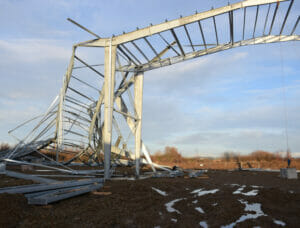A SIMPLE DEFINITION
Imagine you crash your car, and it goes into the bodyshop looking like the image below.

Now imagine your car comes back looking like this image below. In most people’s eyes, this would be considered betterment. The value of the repaired car is greater than the value of the car before the crash.

A LEGAL DEFINITION
Betterment is considered to be a repair which results in something, for example, a property, being improved beyond the condition in which it was before it was damaged. Simply put, it is unjust enrichment.

DESIGN BETTERMENT
Betterment is also a defence, which can be raised in a design context to a monetary claim, made by a client for an alleged deficient design.
Let us say that a designer specifies a sink but forgets to specify any taps. Can the client claim the cost of the taps from the designer?
No, this is betterment. The client would have to pay for the taps anyway, had the designer specified them.
However, if the sink was installed with taps, but discovered to have no water connection, then the designer would be liable for the costs of opening up the wall and installing any necessary pipework.
CONSTRUCTION BETTERMENT
If a damaged building has no choice but to be repaired in such a way that it is better than it was before the damage, a reduction in the sum claimed will not normally be made. However, if repairs are undertaken to a standard above making required improvements, the sum recoverable may be reduced.
The test applied is: if the repairs were unnecessarily expensive, did the party act reasonably in carrying out the repairs in such a manner? If not, then a reduction in the recoverable costs may be made. For example, a window gets broken and it is replaced with new sliding folding doors, the full cost of the doors would not be recoverable.
AVOIDING BUSINESS INTERRUPTION – CASE STUDY
Harbutts factory[1], situated in an old mill, burned down due to the installation of unsuitable and dangerous plastic materials by Wayne Tanks. This resulted in the case of Harbutts Plasticine Limited v Wayne Tank and Pump Co. Limited.
However, Harbutts were not allowed to rebuild the old mill by the local planning authority and so built a new factory. Wayne Tanks argued that Harbutts should only be able to recover the difference in the value of the mill before and after the fire, not the cost of a new building.
This argument was rejected, with the judges stating construction of a new factory was the only way Harbutts could continue in business and retain its workforce.[2]

INSURANCE BETTERMENT
Betterment is also used by insurance companies to lower the reimbursement that a claimant receives. The argument surrounds whether the reinstatement adds value. Generally, if repair works are carried out to a higher standard than was required, the betterment will be deducted from any damages claimed. However, if the claimant had no choice other than to carry out the work in that way, for example, due to changes to building codes, then no deduction will be made. For example, in the United Kingdom, if an external wall to a property is rebuilt then the thermal properties of the new wall would require upgrading to meet the latest regulations with regard to heat loss.
AVOIDING THE SAME ISSUES
In another case, a claimant noticed there was cracking in his outbuilding, which had been caused by subsidence. The insurer’s engineers stated that the best solution would be for the outbuilding to be demolished and rebuilt on new foundations.
However, the insurer stated that the outbuilding could be rebuilt on the existing foundations; new foundations would be betterment. The insurer’s engineer believed there would be further movement in the old foundations, and therefore the new outbuilding could potentially suffer similar subsidence damage. On that basis, the insurer agreed to cover the cost of the new foundations.
CONCLUSION
Betterment can be used as a defence against claims for damages. However, if the claimant acted reasonably or had no choice in improving the property beyond its pre-damaged state then a betterment defence may not be successful.
ABOUT THE AUTHOR
Austen Smith is a Forensic Architect in Hawkins’ Dubai office who specialises in construction defects and defects in architectural design. He has twenty years’ experience in construction projects spanning Europe, the Middle East, the CIS, East Asia and Australia.
[1] Harbutt’s “Plasticine” Ltd v Wayne Tank and Pump Co Ltd [1970] 1 QB 447
[2] Photograph taken from https://thebathmagazine.co.uk/the-spirit-of-christmas-past/







